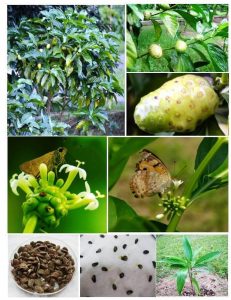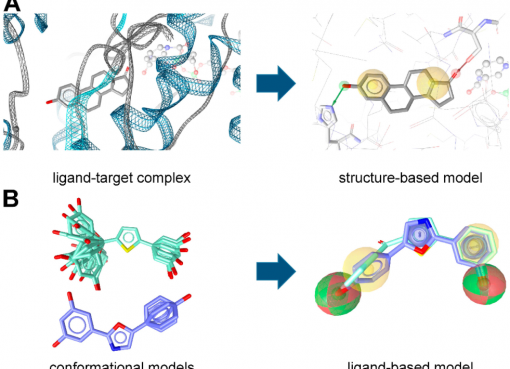Noni, popularly known as Indian Mulberry (Family: Rubiaceae), is a ‘wonderful medicinal plant’ which is being used as a source of medicine in many of the traditional health management systems. NONI can be elaborated as N-Natural, O-Oxidative stress reducer, N-Nutritional supplement, I-Immune enhancer. It is an evergreen small tree distributed worldwide, naturally spread in the tropical regions of the world. Noni, Morinda citrifolia, is native to Indonesia and Australia. The tropical humid climate is very much suitable for cultivation of Noni. In India, it is found naturally in Andaman and Nicobar Islands, and has been introduced to a few south Indian States – Kerala, Karnataka, Tamil Nadu and Andhra Pradesh. Noni has a long history related to medical uses in the Southeast Asian countries. It is also considered as one of the important medicinal plants used in a wide range of medicinal applications to enhance the immune system in the human body. Different parts of the plant such as leaves, stem and roots are used as medicine. It is used to cure cough, cold, pain, liver disease, malaria and blood pressure. It was reported to have a broad range of therapeutic and nutritional values. Noni is found to contain 196 nutraceutical compounds and is rich in health attributes as antioxidant, antidiabetic, anticancer and has many vitamins and amino acids.
Noni has great market potential as there is a great demand for Noni products – noni juice, noni capsules and noni creams, and their cost is very high. Noni juice in different formulations for diabetics, cancer, jaundice and as health enhancer are available in market and sold @ Rs. 1500/- per 800 ml. Noni juice has been scientifically confirmed to be remarkably safe, excellently efficient and highly effective in treating and also preventing a number of diseases. The high therapeutic profile and safety potential of Noni has made it a popular health enhancer and food supplement worldwide.
 In North East India, there is no commercial cultivation of Noni. In North East India, people are very much dependent on natural products (folk- medicine) and resort to traditional ways of treatment because of their easy availability and cheaper cost. This region has a tropical humid climate which is very much suitable for Noni cultivation. Recently, the Rain Forest Research Institute (RFRI), Jorhat with the support of National Medicinal Plant Board, New Delhi has introduced Noni on experimental basis in Assam, Mizoram and Tripura, and it has shown promising results. RFRI has improved the existing package of practices for Noni cultivation in NE India and formulated protocols for processing of Noni fruits, preparation of products and their preservation. Noni cultivation in NE India can contribute significantly in improving the livelihood of local communities and also impart health benefits at an affordable rate. Noni cultivation will also help to promote animal husbandry as the ripe fruits are also good food for pigs and poultry. Noni is not a medicine; it’s a health tonic for human beings for healthy life.
In North East India, there is no commercial cultivation of Noni. In North East India, people are very much dependent on natural products (folk- medicine) and resort to traditional ways of treatment because of their easy availability and cheaper cost. This region has a tropical humid climate which is very much suitable for Noni cultivation. Recently, the Rain Forest Research Institute (RFRI), Jorhat with the support of National Medicinal Plant Board, New Delhi has introduced Noni on experimental basis in Assam, Mizoram and Tripura, and it has shown promising results. RFRI has improved the existing package of practices for Noni cultivation in NE India and formulated protocols for processing of Noni fruits, preparation of products and their preservation. Noni cultivation in NE India can contribute significantly in improving the livelihood of local communities and also impart health benefits at an affordable rate. Noni cultivation will also help to promote animal husbandry as the ripe fruits are also good food for pigs and poultry. Noni is not a medicine; it’s a health tonic for human beings for healthy life.
FIGURE: (A) A Healthy plant (B) Bundle of fruits (C) Mature fruit (D) Grass Demon Butterfly (Udaspes folus) (E) Rice Swift Butterfly (Borbo cinnara) (F) Noni Seeds (G) Germinated Seeds (H) Noni healthy seedling cultivation at garden
REFERENCES:
Chan-Blanco,Y.; Vaillant, F.; Perez., A.M.; Reynes, M.; Brillout, J.M. and Brat, P. (2006). The Noni fruit (Morinda citrifolia L.): A review of agricultural research, nutritional and therapeutic properties. J. Food Comp. Anal. 19: 645-654.
Jayakumar; David, B.V.; Selvaraj, P. and Raja, M. (2008). Insect pest complex of Noni (Morinda citrifolia) in south India. Third National Symposium on Noni, New Delhi,18-19 Oct 2008. p. 64.
Morton, J. (1992). The ocean-going noni or Indian mulberry (Morinda citrifolia Rubiaceae) and some of its ‘colorful’ relatives. Economic Botany 46: 241-256.
Nelson, S.C and Elevitch, C.R. (2006). Noni: The complete guide for consumers and growers. Permanent Agriculture Resources, Holualoa, Hawaii.
Nelson, S.C. (2002). Noni cultivation in Hawaii. University of Hawaii CTAhr – Cooperative Extension Service, PD-19 Morinda citrifolia L., 12.
Ponnaiyan, P. and Vezhavendan, S. (2005). Growth regulators and nicking on germination. Int. J. Noni Res. 1 (1): 37
Singh, D.R. and Rai, R.B. (2005). Effect of growth regulators in rooting of stem cuttings of Morinda citrifolia var citrifolia in bay Islands. Int. J. Noni Res. l (1): 17-22.
Singh, D.R.; Rai, R.B. and Singh, B. (2005). The Great Morinda – A potential under-utilized fruits in Bay Islands. The Daily Telegrams, Port Blair, April 24. p. 2.
Singh, D.R.; Rai, R.B. and Singh, B. (2005). The Great Morinda – A potential underutilized fruit for tsunami affected areas in Bay Islands, UTS voice, Port Blair, April 16-30, p. 21.
Wagner, W.L.; Herbst, D.H. and Sohmer, S.H. (1999). Manual of Flowering Plants of Hawaii (Revised Edition): University of Hawaii Press, Honolulu.
Download PDF
Jesminwara Begum, M.Sc. Biotechnology, KIIT University Bhubaneswar, Odisha




